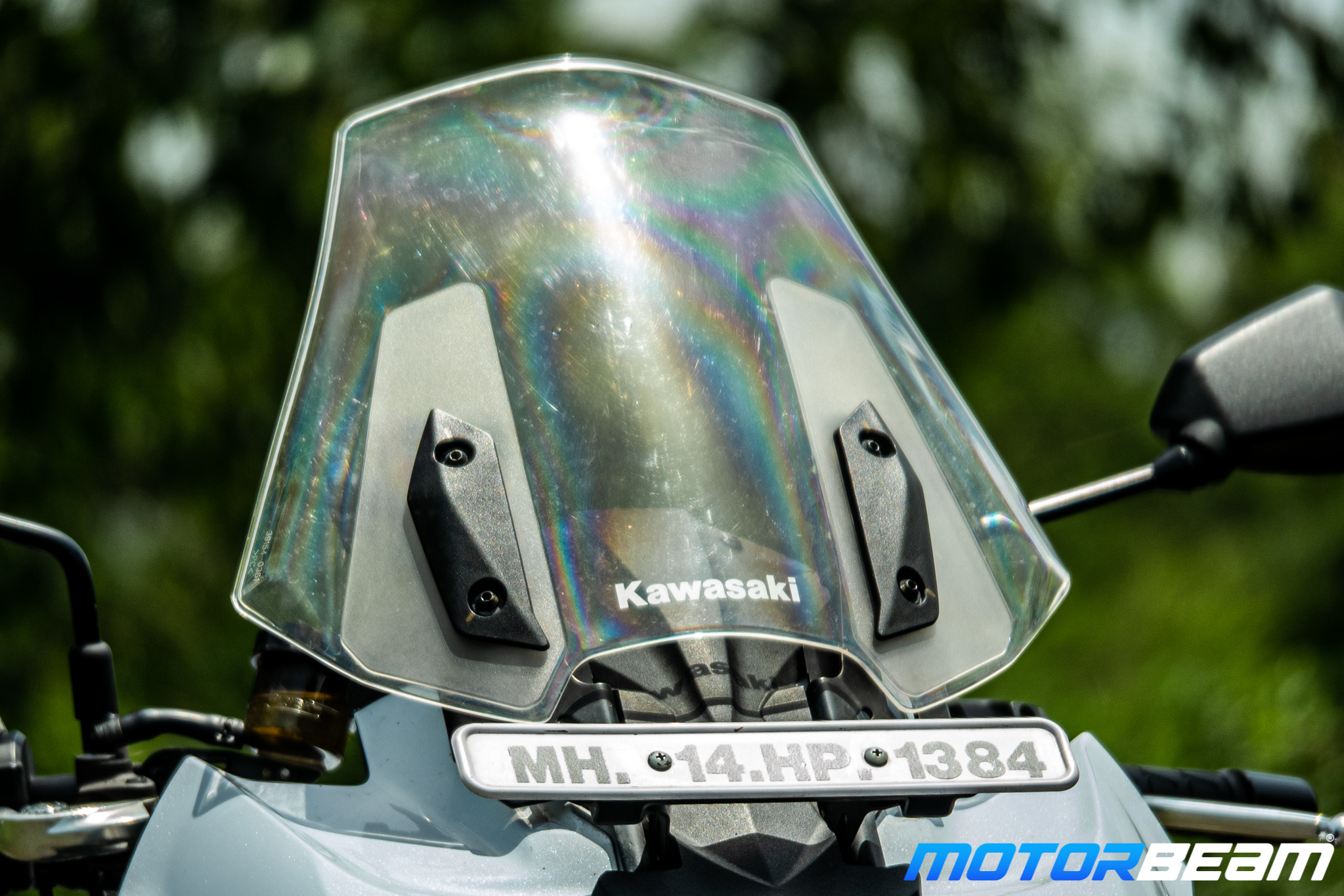2021 Kawasaki Versys 1000 Test Ride Review
We extensively test the latest 2021 Kawasaki Versys 1000 and tell you all about it.
We extensively test the latest 2021 Kawasaki Versys 1000 and tell you all about it.
Home » Bike News » Kawasaki Versys » 2021 Kawasaki Versys 1000 Test Ride Review
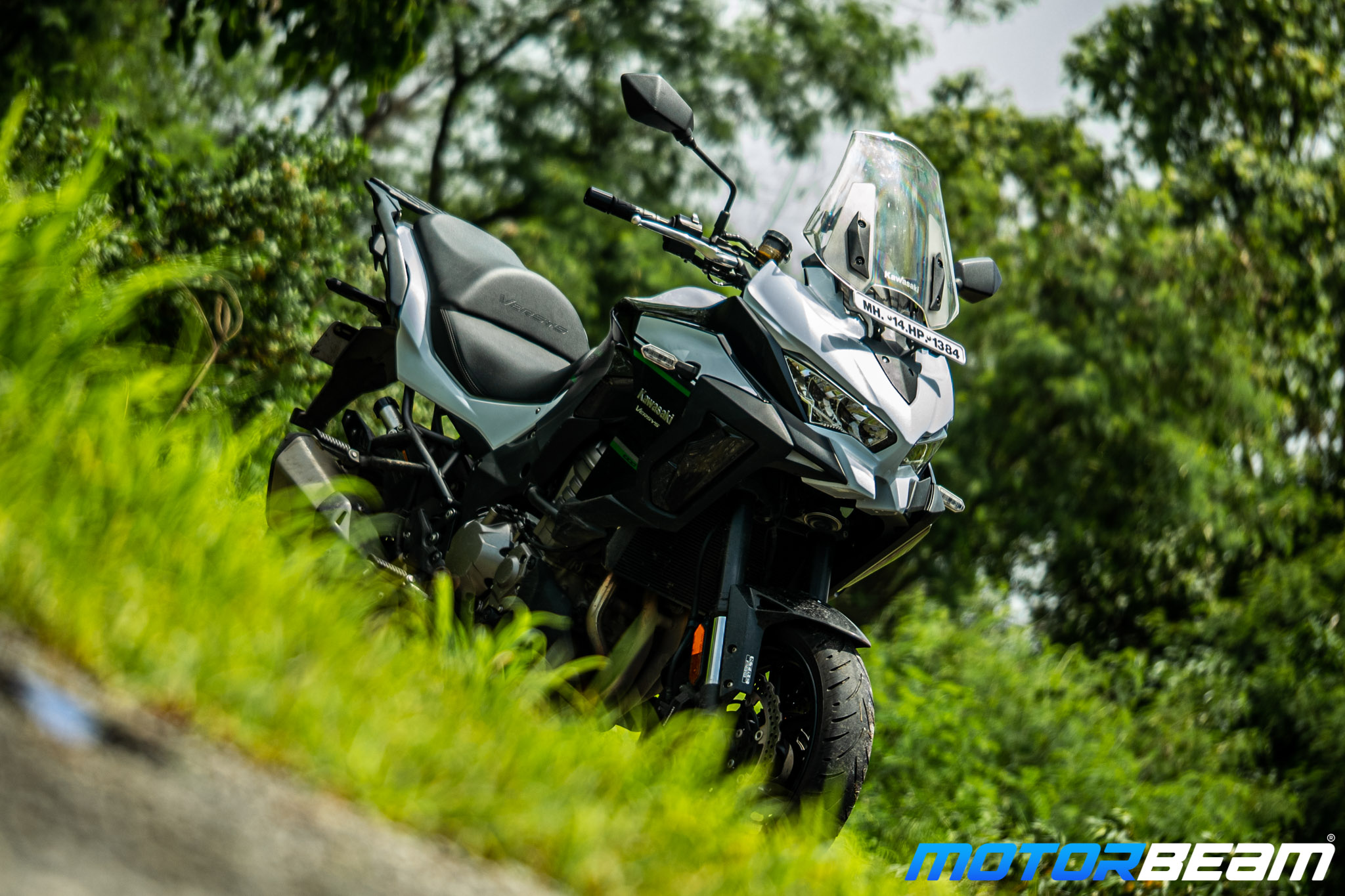
Bike Tested: Kawasaki Versys 1000; Road Test No. 1327; Test Location: Mumbai
Price OTR Mumbai: Rs. 14,22,738/-
The Versys 1000 is the flagship adventure-tourer motorcycle from Kawasaki’s line-up in India
Globally known as the ultimate dual-sport bike, the Kawasaki Versys 1000 has gained a lot of goodwill. The Versys 1000 is the flagship adventure-tourer from Kawasaki’s Versys lineup. It is also the most affordable litre-class ADV bike you can buy here in India. The Versys 1000 competes with BMW F900XR, Triumph Tiger 900, Honda Africa Twin and the Ducati Multistrada 950. But, Versys has a marginal price advantage over its competitors, making it a very luring deal. A few weeks ago, we got a chance to test the BS6 Versys 1000 and we were quite thrilled! In our road test of the Versys, we test the bike’s touring and off-roading capabilities and tell you whether it is the one for you.
MotorQuest: Kawasaki’s Versys lineup has been in existence since 2006. It is the flagship adventure-tourer from the brand. The name Versys is the blend-word for versatile and system. The Versys 1000 is a CKD model which is assembled at the brand’s Chakan plant in Maharashtra.
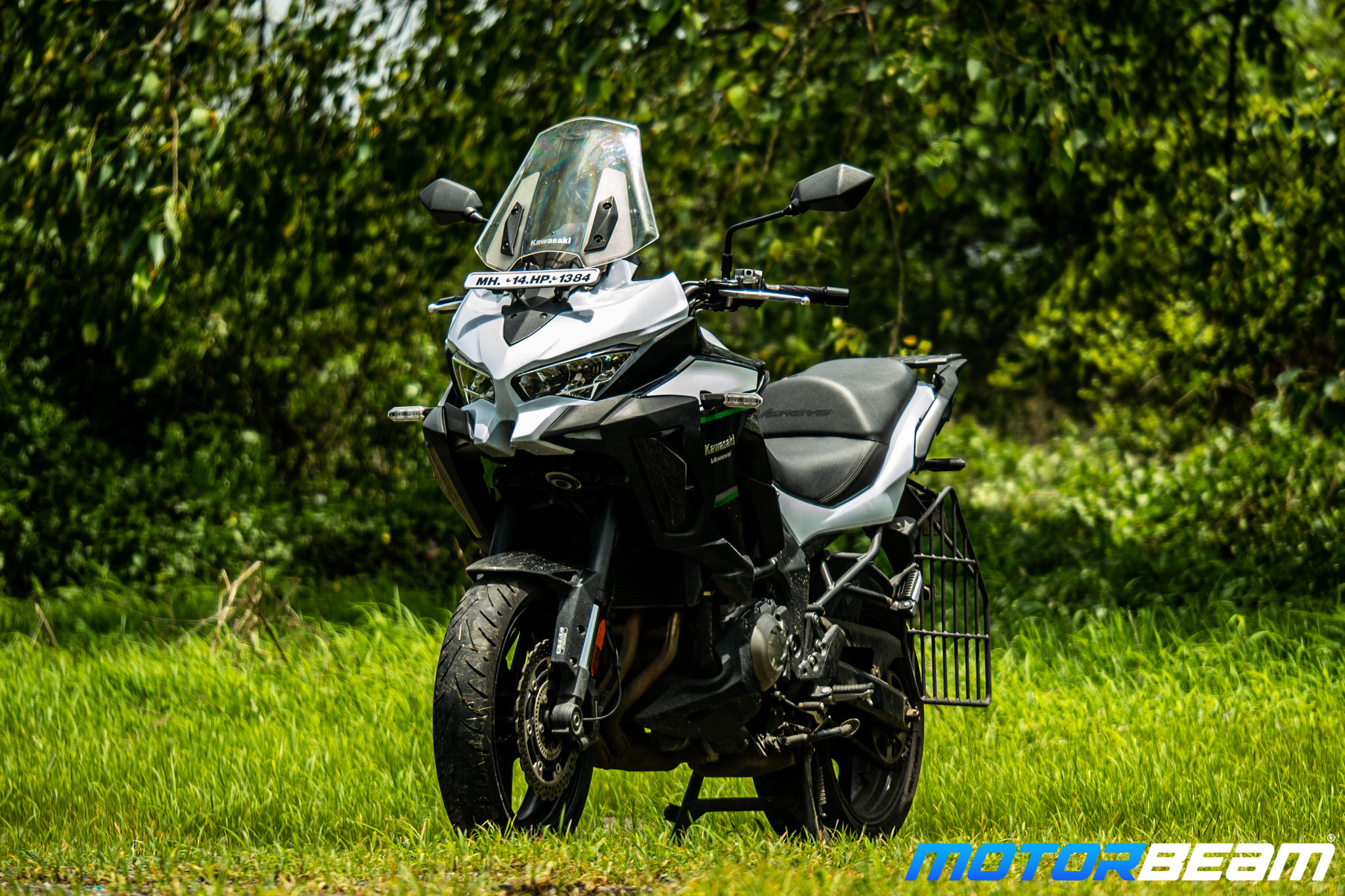
Styling – The Kawasaki Versys 1000 looks a lot handsome now as it follows the new design language. The sharp LED headlamps remind us of the Ninja ZX-6R but, they look good on the Versys as well. With its high stance and huge dimensions, the Versys sets a bold, intimidating first impression. However, the tyres look a bit too small on a bike of this size and calibre. Looking at it from the sides, you realise the short wheelbase and the panel overhangs. The Versys does demand a lot of space and presence. Adding to that is the presence of the bikini fairing finished in dual-tone treatment and the massive 1043cc engine stuffed in between.

The Versys 1000 looks the part and dominates the road with its daunting presence
The tank is well sculpted and suits the high-spirit soul of the Versys. Further, the dual pod exhaust looks practical, to say the least. Once again, the nasty saree guard ruins the overall appeal and charm of the motorcycle. The roomy and supportive seat ends with neatly integrated grab rails and a utilitarian top-box mount, a likeable touch. Considering the overall dimensions of the bike, the taillight looks a bit awkward at first. Overall, the Versys is a very well designed motorcycle that loves to attract bucketloads of attention, wherever it goes. Lastly, the Versys is available in only one colour option now, Candy Lime Green, which looks funky but we really miss the White colour.
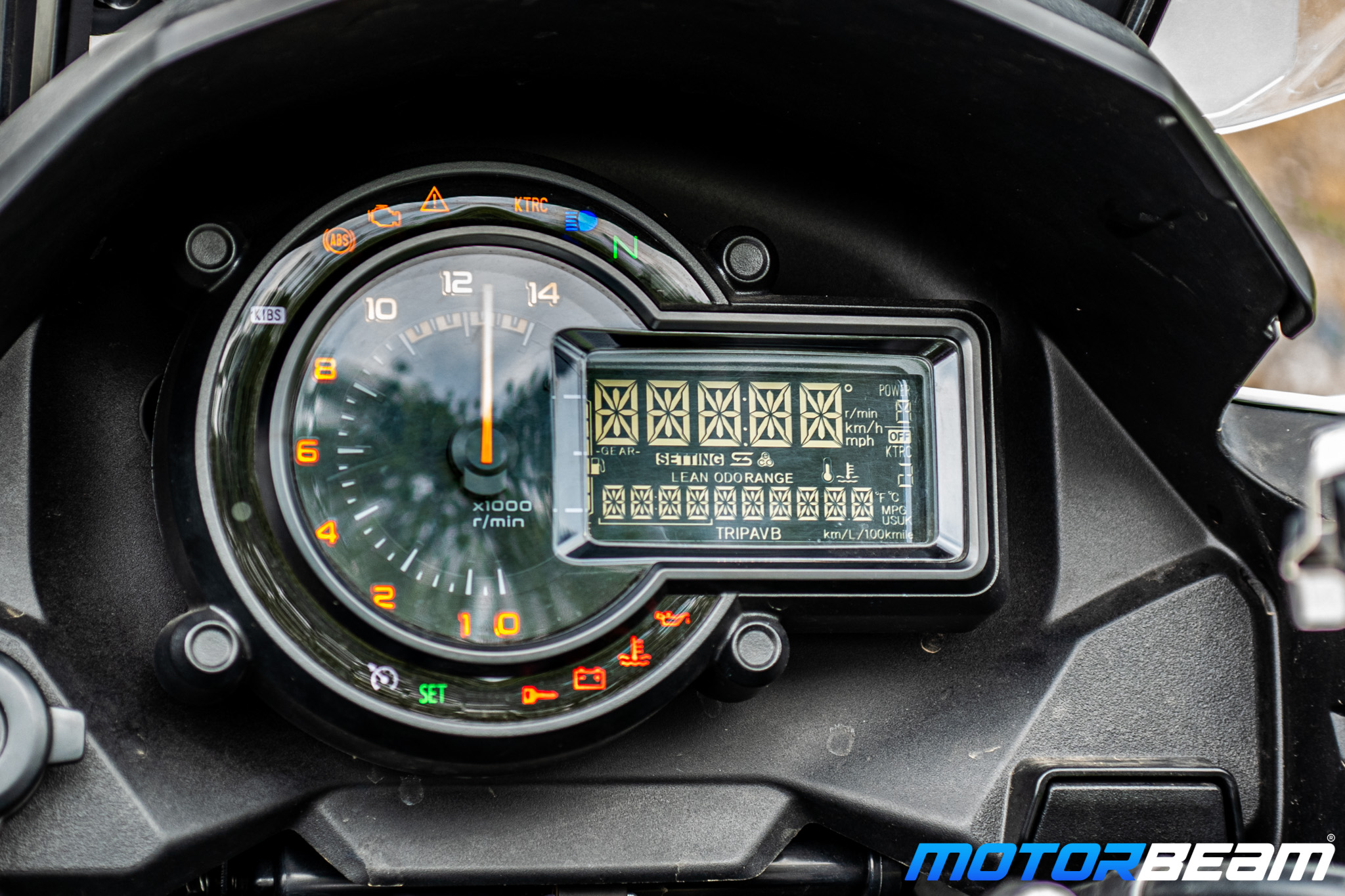
Instrument Cluster and Switchgear – The Versys gets an analogue-digital cluster which might sound a bit off, considering the price and placement of this bike. But, it isn’t too bad. To start off with, it gets a large tachometer and a rather small negative LCD unit which displays all the basic rid telemetry data including range, live mileage, ambient temperature, lean angle meter and engine temperature. The only letdown here is the size and brightness of the LCD cluster. Overall, the cluster is loaded with information but feels a bit outdated in 2021. We would love to see the new TFT cluster in the next update.
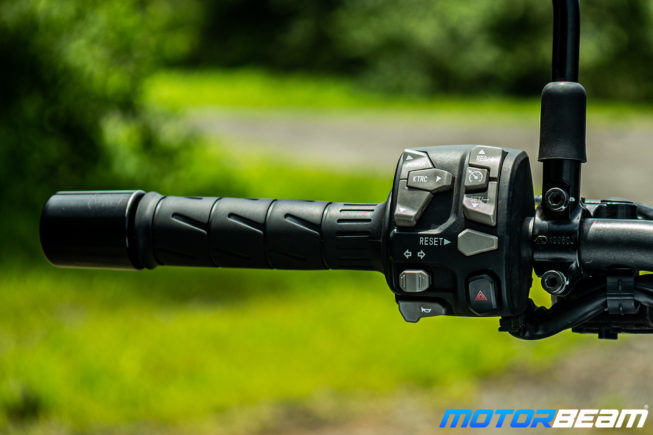
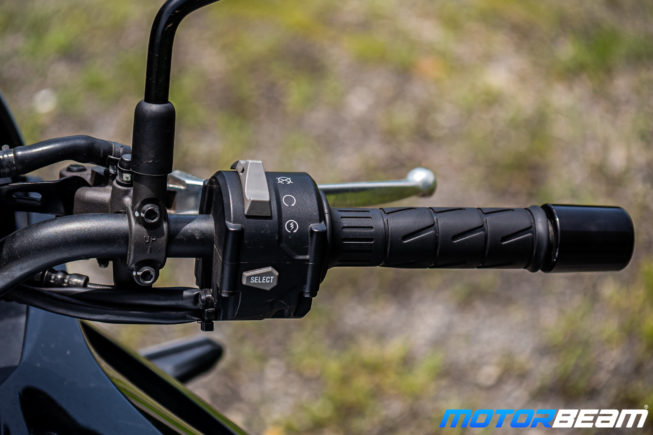
While the current cluster has a ton of information, a big TFT cluster would do a lot of justify it
The switchgear setup on the Versys 1000 is a bit complex. The left switchgear occupies a host of switches for the cruise control system, integrated pass light and high-low beam switch, indicator switch and a switch to control the KTRC modes (Kawasaki Traction Control System), and just beside the indicator switch lies the ‘RESET’ button. At the bottom is the horn button. While the left switchgear is pretty occupied, the right unit only comprises a sizeable slider-type starter and a ‘SELECT’ button. The overall quality of the switchgear is fantastic and we love the clicky feedback from the buttons.
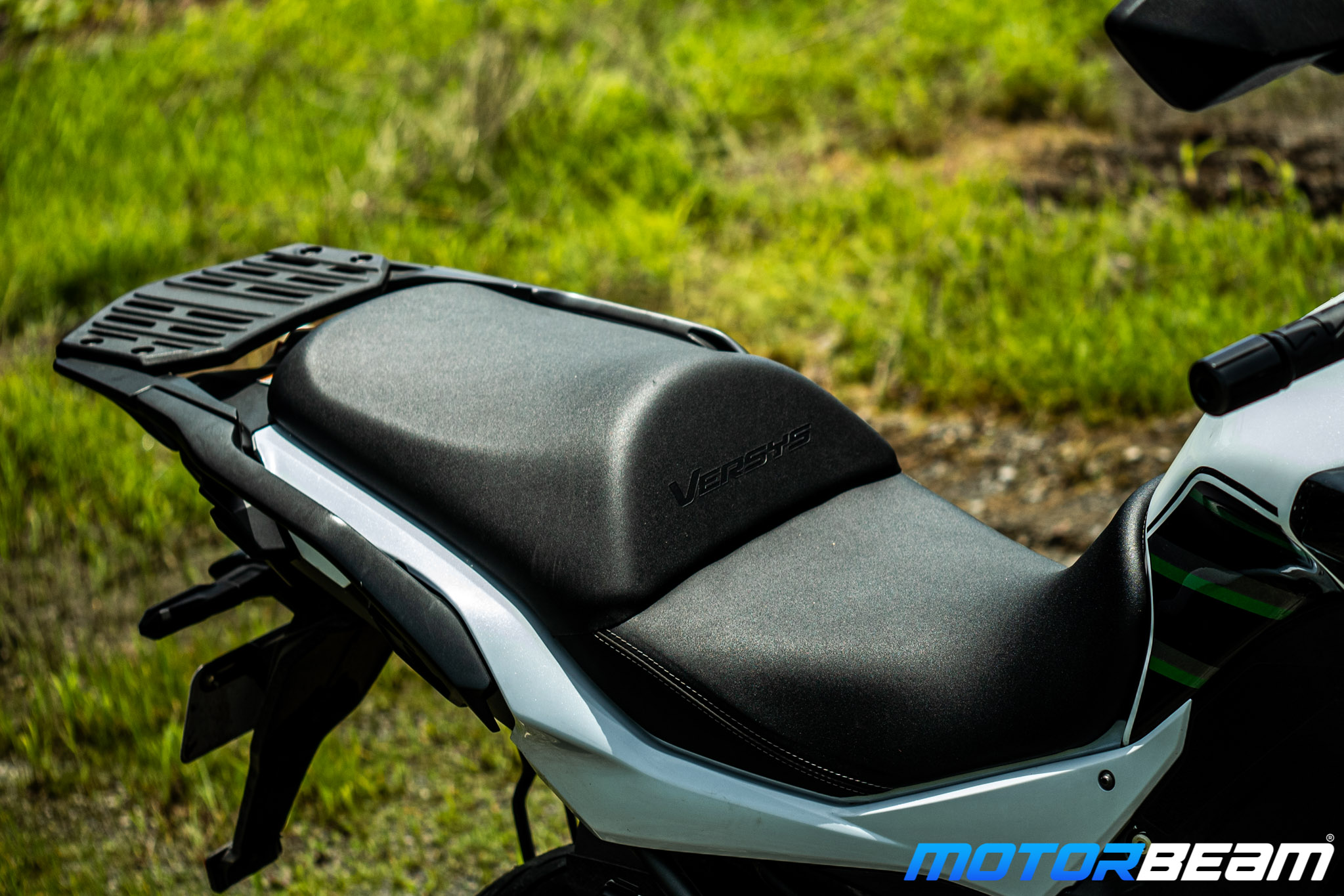
Ergonomics – Ergonomically, the Versys 1000 is a very well engineered and comfortable bike to be on. The seat height is 840 mm which, is challenging for anyone below 5’8″, but it is still manageable due to the clever weight management. Speaking about the seat, the foam is well balanced, and the contours and width make it great for even the longest of journeys. The centre set pegs and the high mounted, long handlebar ensures an upright riding posture. Due to their tapered outer edges, the mirrors don’t offer a wide view of what’s behind. The seat is a single-piece unit designed as a split setup with brilliant cushioning on offer for the rider as well as pillion.
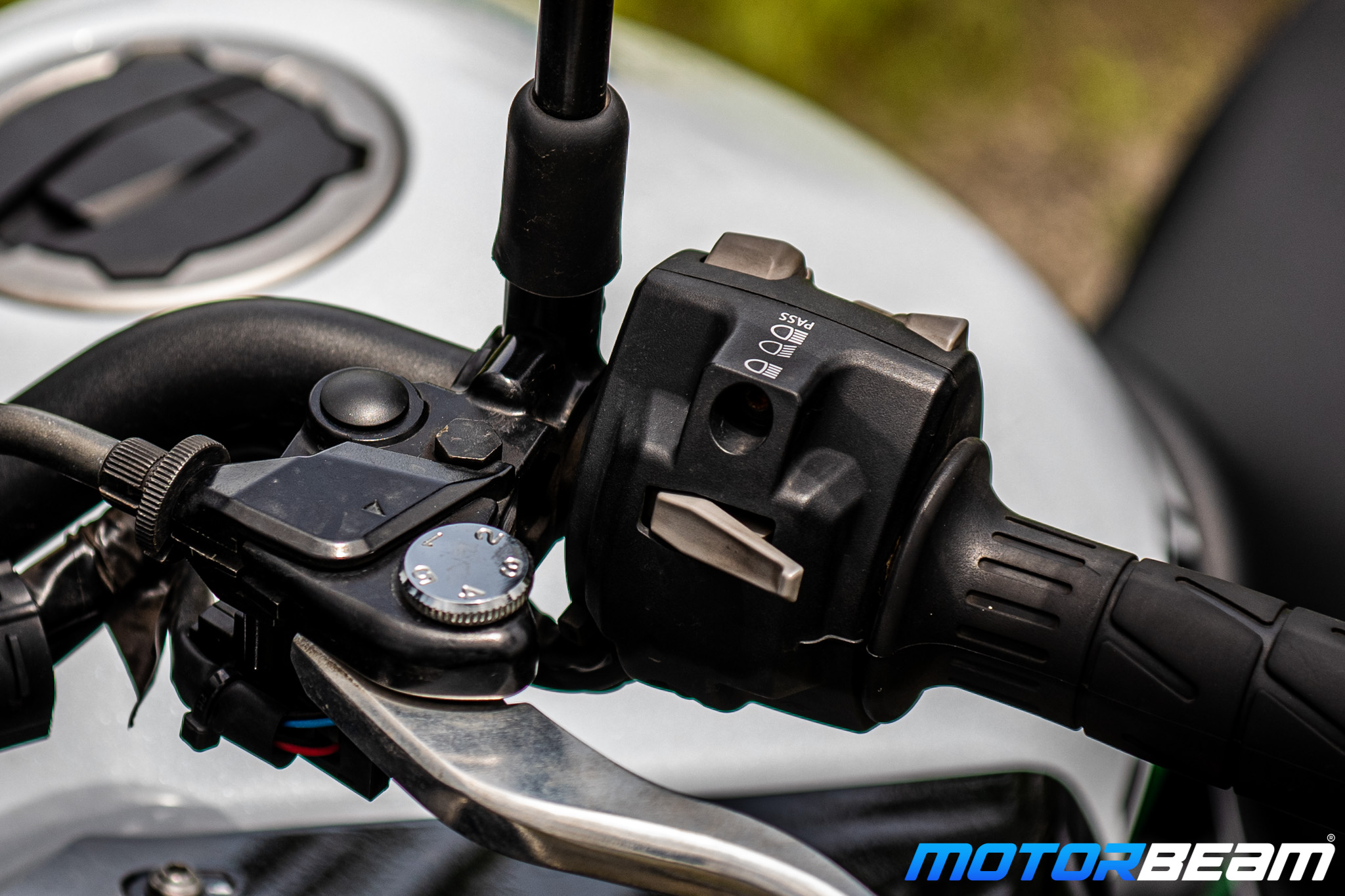
We love the size and positioning of the grab rails. They are ergonomically perfect as they are thick and long – this allows the pillion to hold onto them from different angles and techniques. This blend results in a very commanding and upright seating posture. In the end, we really wish that the Versys got a height adjustment feature for the seat to make it more accessible for the average Indian. But to make up for it, Kawasaki has equipped the Versys 1000 with 5-step adjustable levers as standard which is quite respectable. The visor upfront is also height-adjustable but only manually and cannot be done while riding.
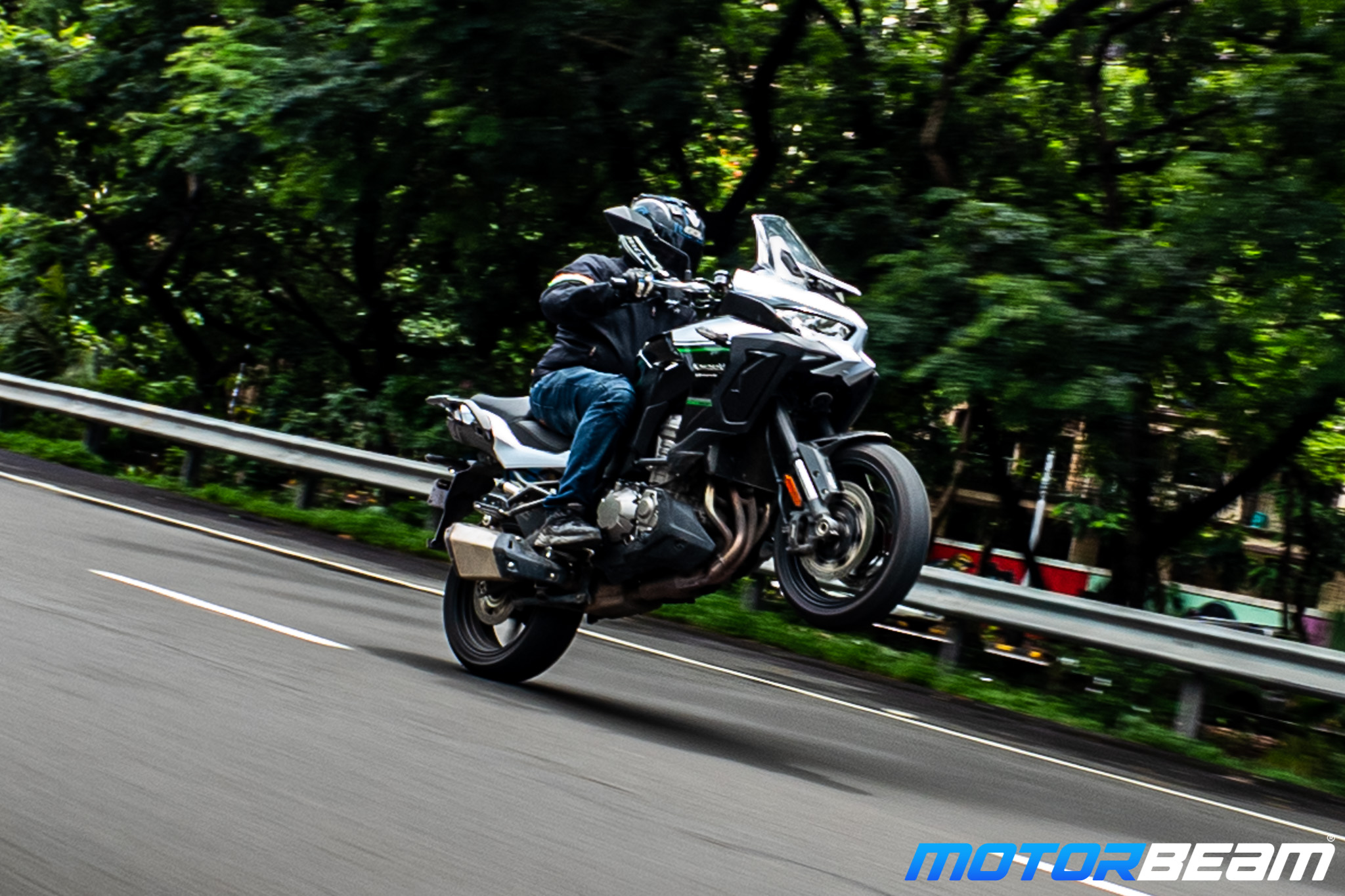
Performance – Powering the Versys 1000 is a 1043cc, inline-four cylinder engine that produces a whopping 118.2 BHP at 9000 RPM and 102 Nm of torque at 7500 RPM. This motor feels alive throughout the rev range. It gains pace like nothing else and has a power-packed midrange while the top-end feels adequate. This engine is mated to a 6-speed gearbox which offers great shifts. However, the absence of a quick-shifter is sometimes felt. The Kawasaki Versys 1000 gets two power modes – low and high. It reaches 100 km/hr in low power mode in 4.33 seconds and in the high power mode, the same is achieved in 3.92 seconds.
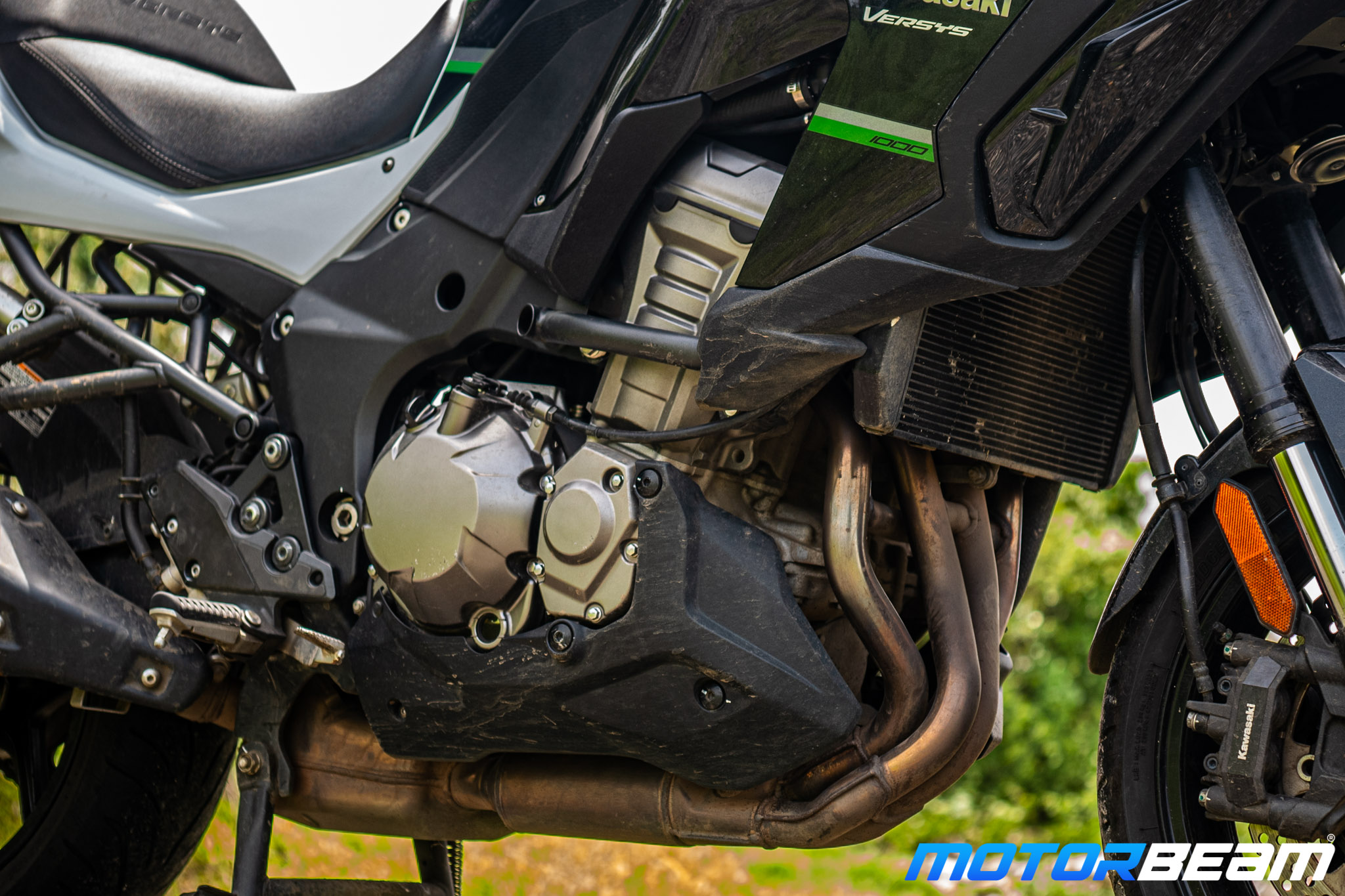
The bike gushes forward with a lot of enthusiasm and treats you with power wheelies
Like previously said, the Versys 1000 gets two riding modes – low and high. As obvious, these modes take control over the throttle response, traction control and ABS sensitivity. What makes this motor one of our favourites is its tractability, smoothness and overall versatility. Being an inline-four litre-class motor, this one too tends to heat up a lot in city traffic but, the radiator does a commendable job of keeping the engine cool. On our test, the Kawasaki Versys 1000 returned a respectable average fuel economy of 20-23 km/l and from a 21-litre fuel tank, the riding range lies at 420 kms which is a healthy number for a bike of this size and weight.
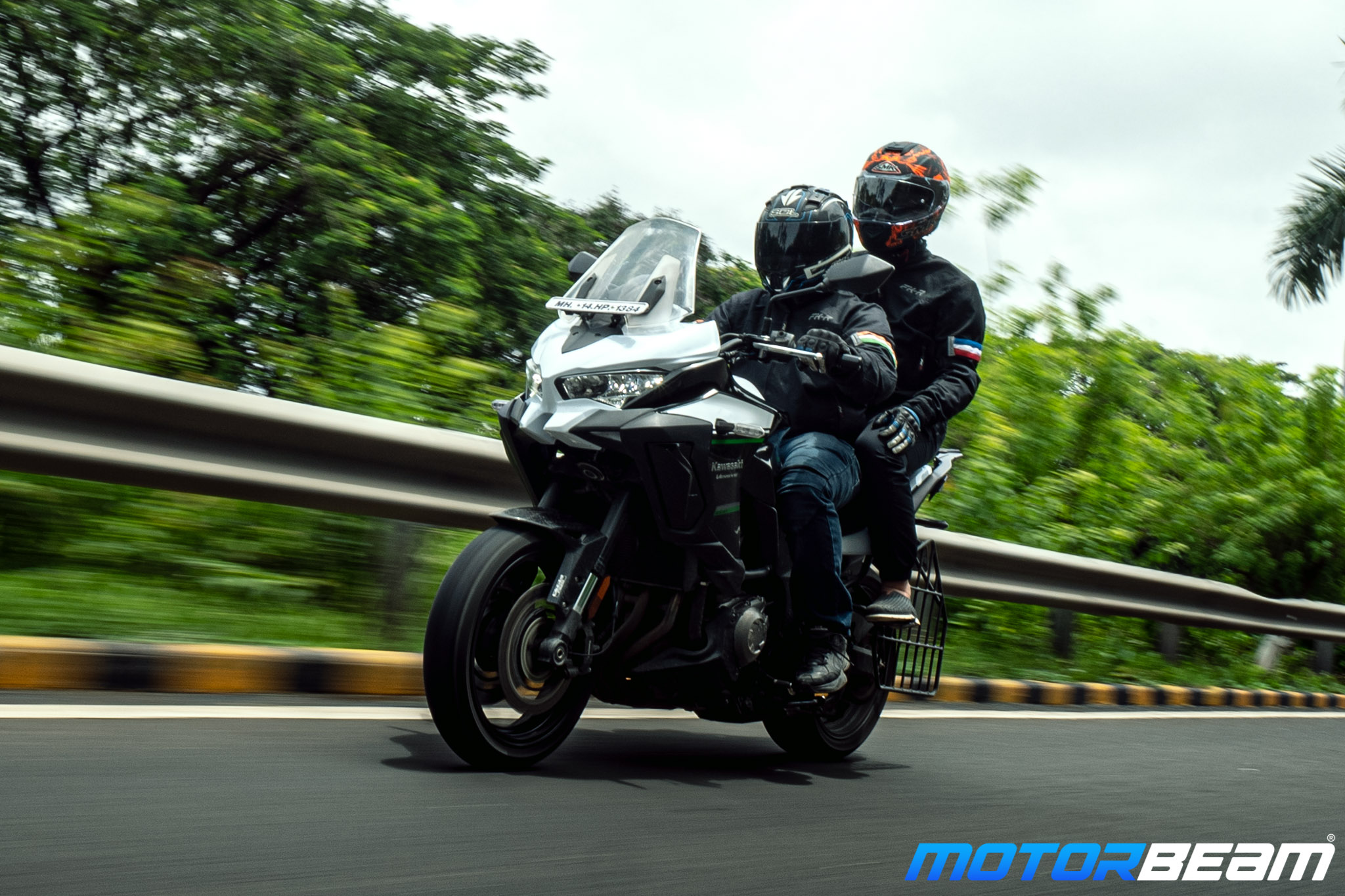
Riding Dynamics – The suspension setup on the Versys 1000 is pretty impressive. At the front, the Versys 1000 gets a manually adjustable USD setup and an adjustable mono-shock at the rear. We love the multifunctionality of this setup as it is very versatile! It glides over potholes and broken patches without any problem and at the same time, it offers excellent straight-line stability and generous feedback on the highway. However, the suspension and chassis balance could be a lot better as the twin-tube chassis tends to flex a lot whilst the suspension wants to do more. Weighing in at 255 kgs, the Versys isn’t light by any means and the dynamics say so too as the bike tips in well but, lifting it back requires a lot of input.
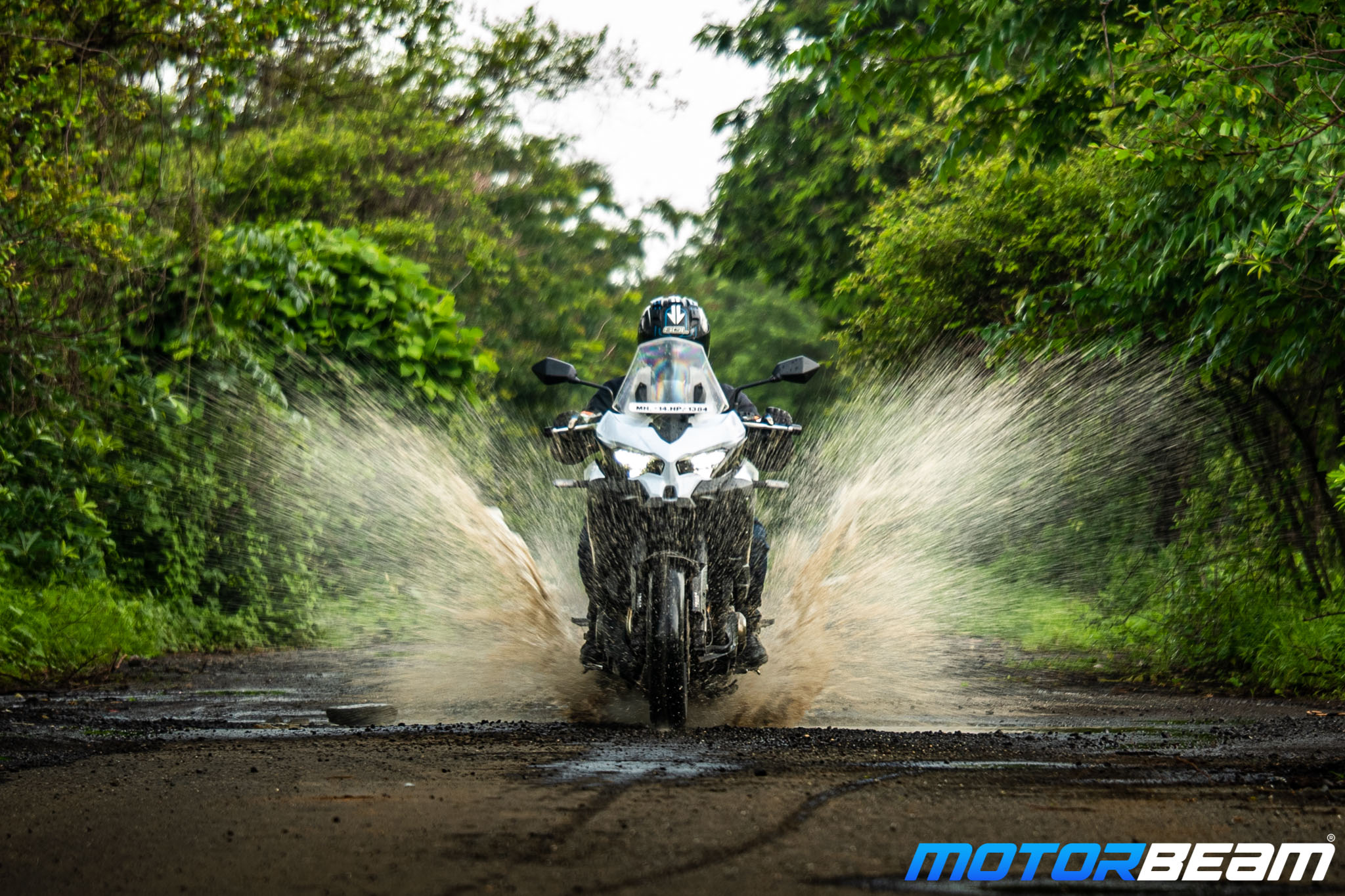
The Versys 1000 packs all the goodies to make touring an effortless task
The Versys 1000 is gripped by road spec Bridgestone tyres that offer phenomenal grip on dry and smooth tarmac but, tend to lose traction on wet and mucky roads. And this is when the KTRC system kicks in and returns traction, allowing you to keep things under control. This bike can comfortably cruise at 140 km/hr with enough breath to go even faster. With a high ground clearance of 150 mm, the bike effortlessly moves over the biggest speed breakers and potholes. About the brakes, the Versys 1000 gets twin 310 mm petal discs up-front and a 250 mm petal disc at the rear. The brakes pack immense stopping power and the ABS is well-calibrated too. All in all, the Versys 1000 makes for an excellent highway mile-munching machine.
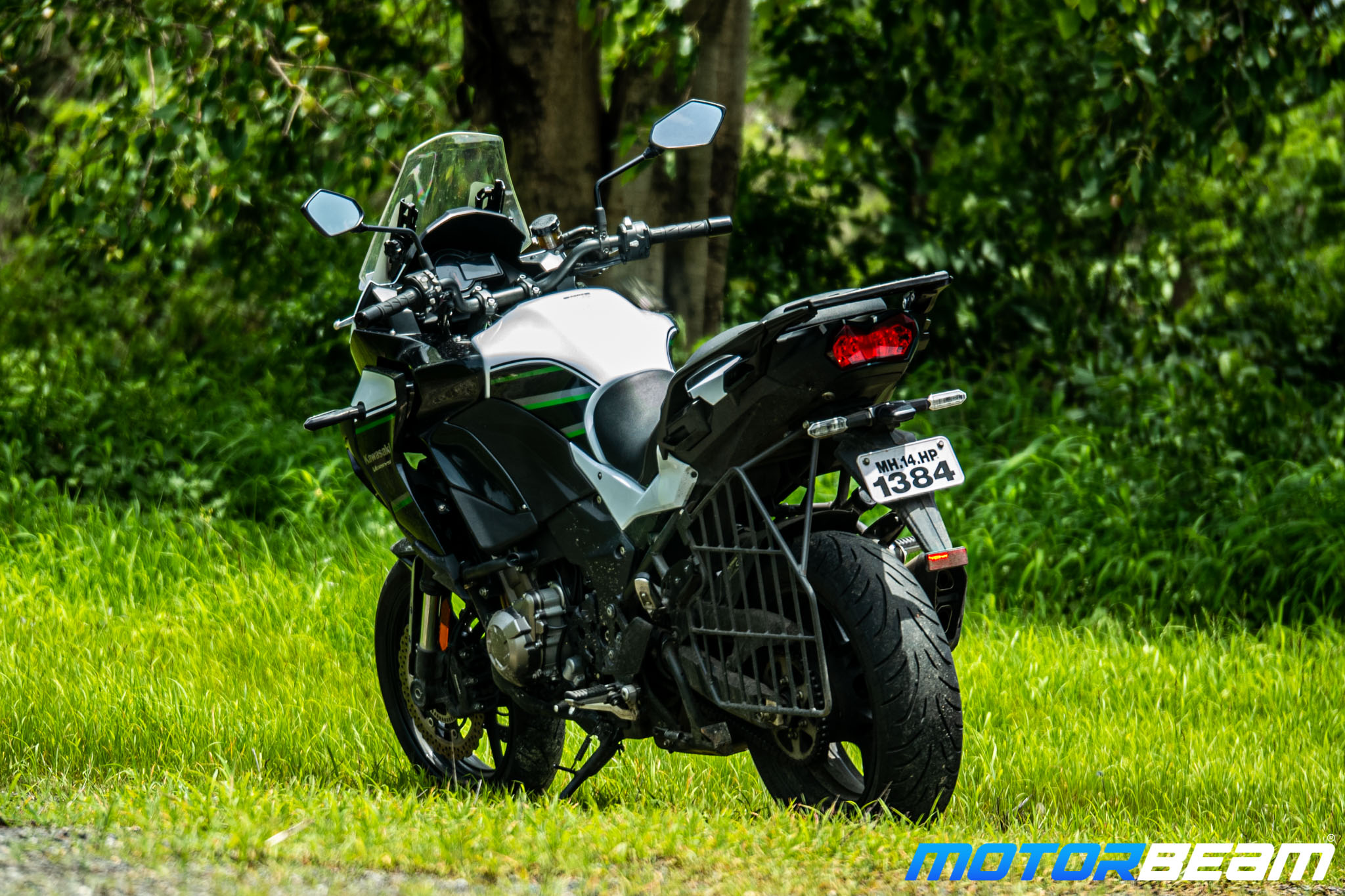
Verdict – At Rs. 14,22,738/- (on-road, Mumbai) the Kawasaki Versys 1000 is a great deal. It is the most affordable litre-class ADV you can buy. Yes, it does miss out on a few needy features but, it makes it up to you with its impressive ride quality and fun-to-ride nature. If you want a reliable companion to go on and on, you should definitely consider the Versys 1000 as it has an unmatched value proposition and goodwill. However, be aware of the high maintenance costs and the after-sales service network of Kawasaki.
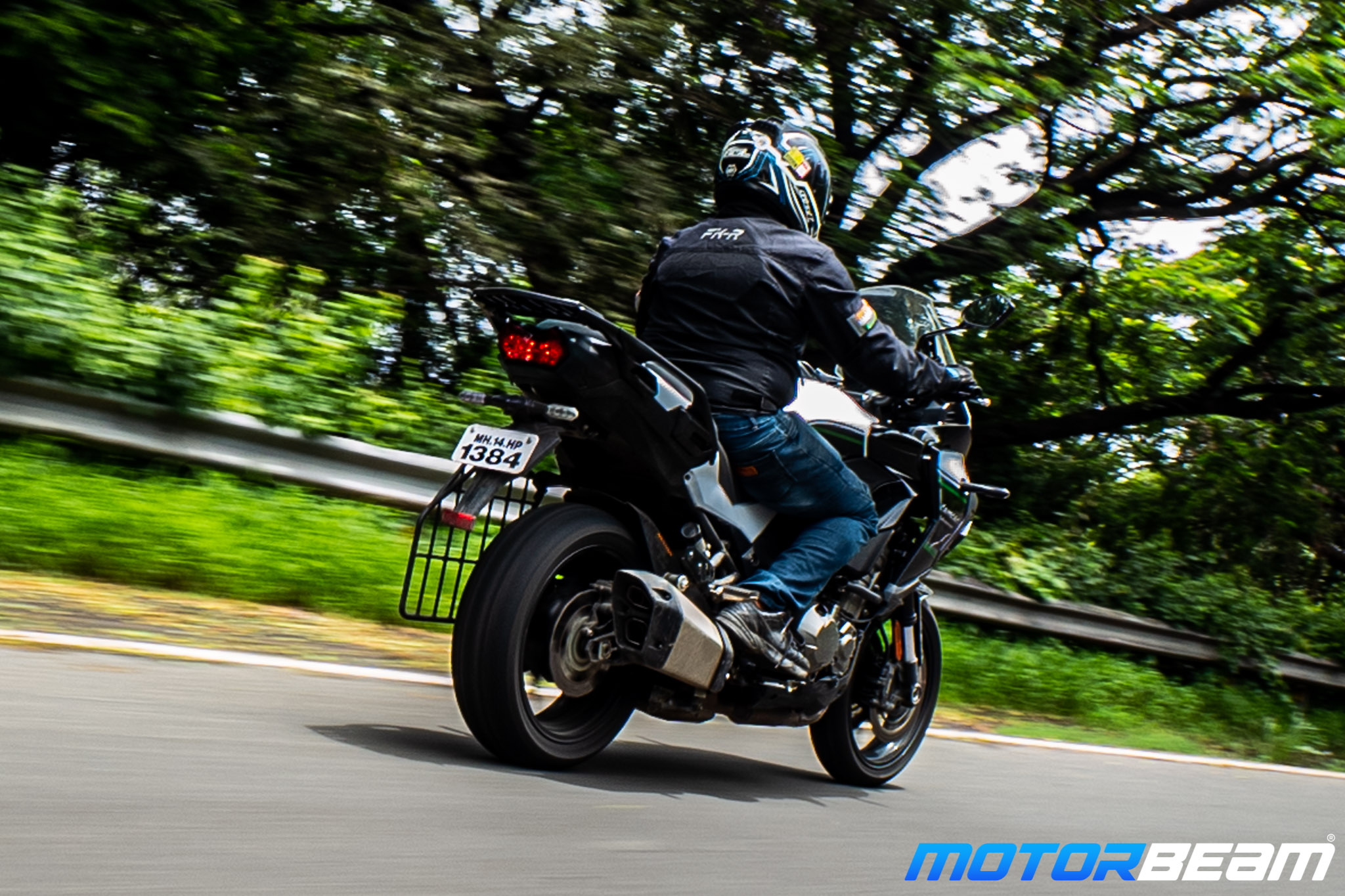
What’s Cool
* The Versys 1000 is very attractively priced * It has brilliant ergonomics and straight-line stability * The 1043cc mill is one of the smoothest engines in this segment
What’s Not So Cool
* Stock tyres are very bad for off-road riding * Instrument cluster lacks the wow factor and feels outdated * Being an adventure-tourer, it lacks the expected “do-it-all” nature
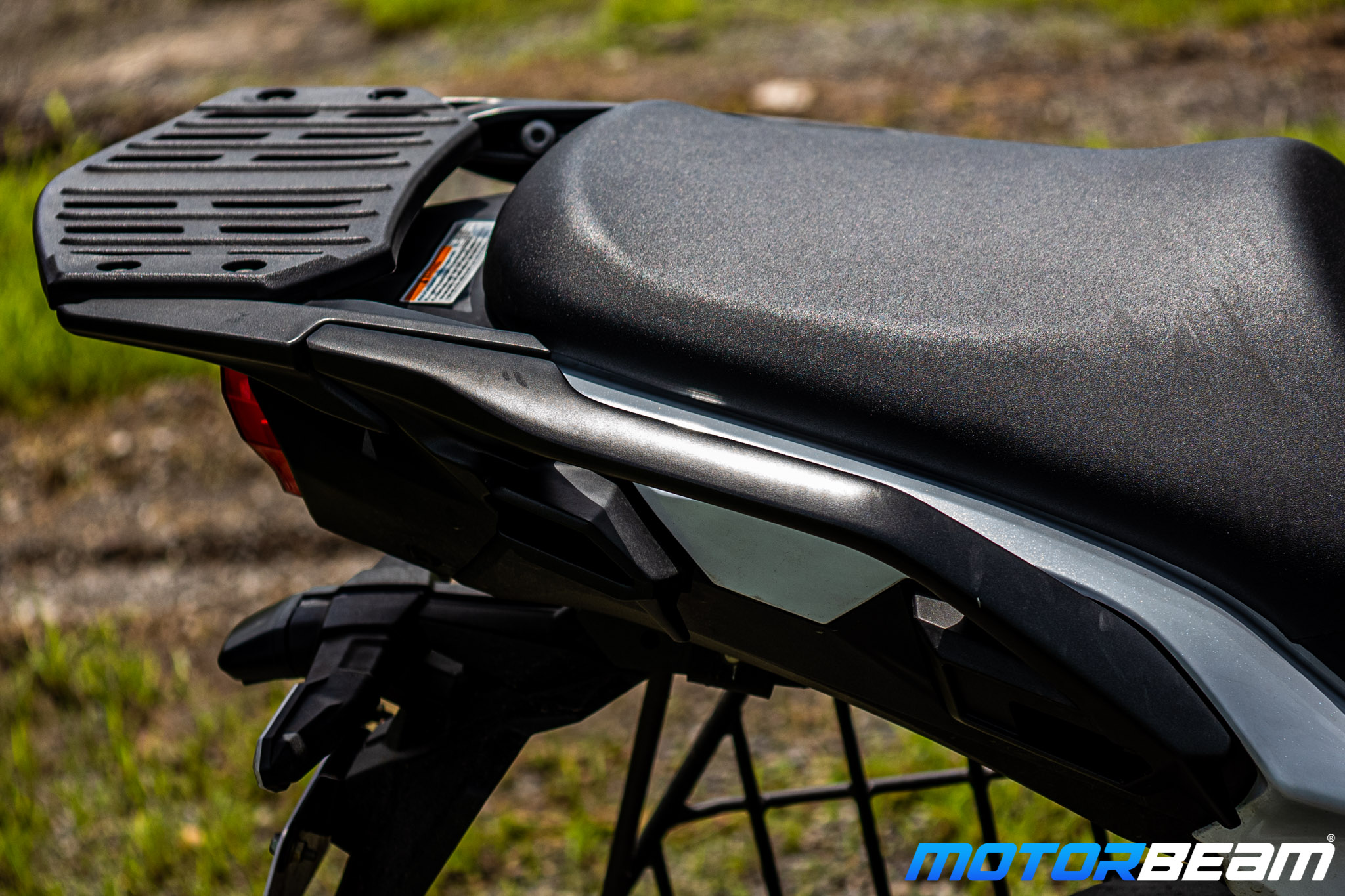
* Engine: 1043cc, Inline-4 Cylinder, Liquid-Cooled
* Power: 118.2 BHP @ 9000 RPM
* Torque: 102Nm @ 7500 RPM
* Fuel Type: Petrol
* Fuel Consumption: 20-23 km/l
* Frame: Twin-tube chassis
* Gearbox: 6-Speed
* Tyres: 120/70/17 (Front), 180/55/17 (Rear)
* Suspension: USD forks (Front), Monoshock (Rear)
* Brakes: Dual 310 mm Discs (Front), 250 mm Disc (Rear); Dual-Channel ABS
* Length x Width x Height: 2270 mm x 895 mm x 1400 mm * Wheelbase: 1520 mm
* Seat Height: 840 mm
* Fuel Tank Capacity: 21-litres
* Kerb weight: 255 Kgs
